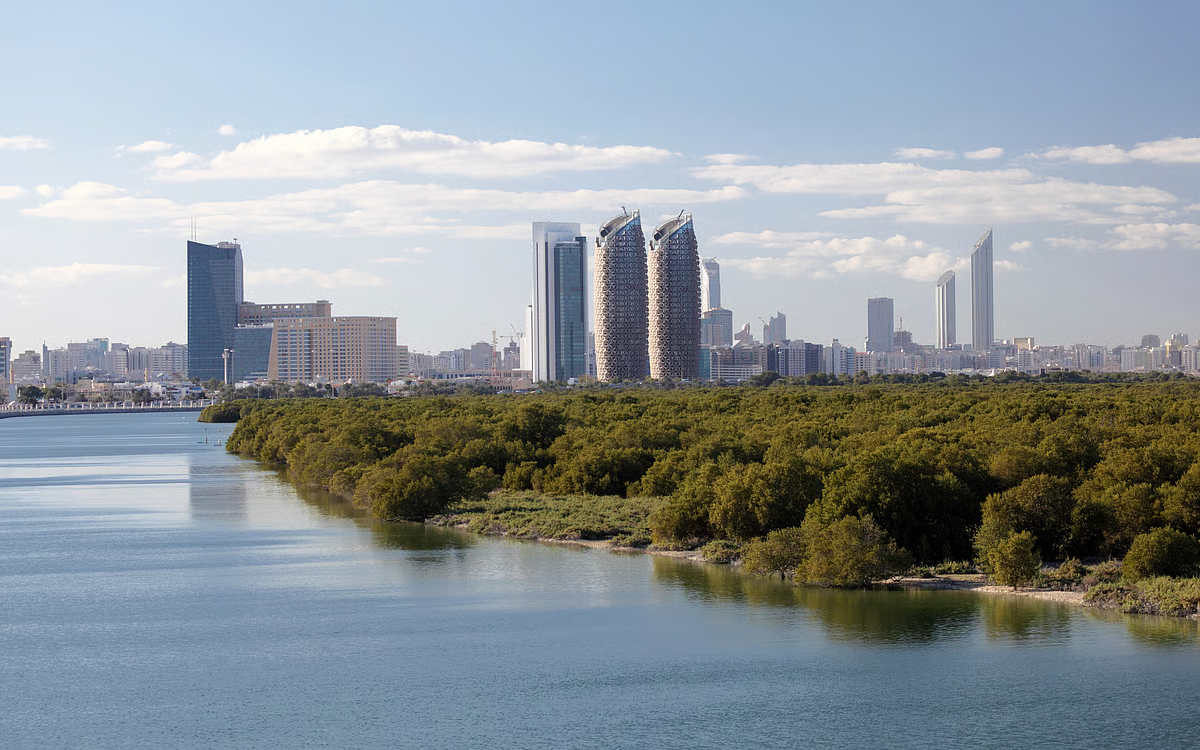
In recent years, the real estate sector in the United Arab Emirates has attracted a great deal of attention — both from global investors and those seeking to call the UAE home. With favourable policies, strong infrastructure and rising population trends, many analysts believe now is a good time to invest, albeit with caveats.
Strong Fundamentals: What’s Working

Several structural factors support the case for stability and continued opportunity:
- Investor-friendly regulation & incentives
The UAE has rolled out measures that make property investment more accessible and secure. For instance, freehold ownership in many zones, “Golden” & long-term visas, zero personal income tax and other business-friendly policies.
These reforms boost confidence among foreign buyers and residents alike. - Solid demand drivers
Population growth, increasing expatriate inflows, tourism and business hubs all feed property demand. For example, one article noted that current market drivers include population expansion and a shift toward end-user buying rather than mere speculation.
On the rental front, yields remain attractive: one report noted expected residential yields of ~7%+ for prime properties. - Improved developer & lender health
After past cycles when oversupply and high leverage caused stress, recent years have seen stronger developer balance sheets, better funding and more cautious launch practices. For example, a note highlighted a drop in average adjusted leverage from 4.8× in 2020 to 1.4× by March 2025 among major developers.
This means the risk of a sudden collapse is lower than in past boom/bust episodes. - Transparency & regulation
Improved buyer protection (escrow accounts, stricter launch approvals) and better data help provide a more stable foundation.
Taken together, these factors underpin the argument that the real estate market is not in a reckless boom phase — instead, it is in a maturing phase with more grounded expectations.
Why Some Experts Say “Good Time Ahead”

Given the stability above, many analysts are upbeat about the near-term outlook:
- The market is expected to remain stable for at least the next 12-18 months. For example: “Prices and rents in Dubai are expected to remain stable for the next 18 months … thanks to strong demand from both local and international investors.”
“The market will remain stable over the next 12 to 18 months … the result of a comprehensive system of regulatory reforms, steady demand …” - Demand remains strong from end-users (people who want to live in the properties) rather than just speculators. This shift reduces the volatility risk.
- Rental yields remain robust and attractive. As one report put it: “Prime residential real estate in the UAE is expected to provide a yield of 7% to 7.5%.”
- The risk of oversupply is acknowledged, but many believe the market is ready for it: some segments will flatten, others may moderate, but the broad market won’t collapse. For example: “Industry forecasts expect continued but moderating growth across the UAE property market … overall sector compound annual growth rate is projected at ~8% over 2024-2029.”
- The idea: If you buy sensibly (location, quality, end‐user demand), you may capture stable value or moderate appreciation, with less speculative risk.
Key Risks & What to Watch
No market is risk-free. In the UAE, several headwinds could moderate growth or create selective corrections. Here are the main ones:
- Supply surge
One of the most cited risks is the large number of residential units coming to market in coming years. For example: “Approximately 150,000 new residential units will be delivered by 2027 … may put pressure on prices, particularly in the apartment segment.”
“Between 2023-2026 approx 250,000 units are slated for delivery … this sharp rise in handovers will mark a record in Dubai’s real estate history and set the stage for a more balanced market.”
Oversupply can specifically affect mid-market apartments, weaker locations, or lesser quality developments, causing price or rental contractions in those segments. - Moderation in growth, not collapse
Many forecasts expect slower growth, not necessarily major declines. A survey revealed that 44% of UAE buyers expect property prices to drop by mid-2025, while 30% expect growth and 26% anticipate stability.
So sentiment is split — there is caution. - Segment-specific risk
The risk is higher in commodity apartments, lower in prime villas or waterfront luxury segments. Many commentators say that villas and branded residences will be more resilient. For example:
Therefore, location, product type and developer quality matter a lot. - External economic & interest rate environment
Global rate rises, cost of funding, currency risks and macro risks (e.g., slowing global growth) can also affect investor appetite. Some reports caution that large supply plus global headwinds could trigger a moderate correction in late 2025-26.
So: Is Now a Good Time to Buy?

Putting it all together: Yes — for many buyers, this could be a good time — provided certain conditions are met. Here’s a simple decision checklist:
- Buy for end-use rather than pure speculation — If you plan to live in the property (or hold for the long term) you are less vulnerable to short-term cycles.
- Focus on quality product & location — Prime areas, villas/townhouses, strong developer, good amenities and infrastructure will tend to outperform.
- Check supply pipeline in that sub-market — If you’re buying in an area where 5,000 apartments are due for delivery next year, you may face pressure on resale/rentals.
- Be realistic about returns — Instead of expecting 20-30 % annual gains like in the recent past, plan for stable growth or modest appreciation (e.g., 5-10% a year) plus rental yield.
- Longer-term horizon is helpful — If you can hold for 5-10 years, you have greater chance of capturing value as the market matures.
- Understand the regulatory/financial context — Confirm escrow accounts, developer financial health, and exit options.
What I’m Watching
- Rental yields: If yields compress a lot (due to supply + lower rental growth), return on investment will decline. Some data suggests rental growth will moderate.
- Completion & handover schedules: Projects getting completed en-mass can flood certain segments, pressurising prices/rents.
- Interest/mortgage rates: If finance becomes more expensive, especially for foreign buyers, demand may slow.
- Global investor flows: UAE is part of global capital flows — if global risk sentiment shifts, property investment may slow.
- Local policy changes: Land/regulatory reforms, visa changes, tax policy – any positive or negative shifts can change sentiment quickly.
Conclusion
The UAE real estate market today stands on much firmer ground than many previous boom cycles. Strong institutional fundamentals — regulatory reforms, investor-friendly policies, demand drivers and healthier developer/finance conditions — mean that the sector is better equipped to deliver stable value rather than wild swings.
For buyers who adopt a prudent, long-term mindset, and select carefully (quality, location, product type), now can be a good time to enter the market. That said, one must remain conscious of the supply wave, especially in average apartment segments, and of the fact that growth may moderate rather than continue at the breakneck pace of recent years.
In short: the headline is positive — “stability with opportunity” — yet the sub-headline reminds us: “selectivity, timing and product matter.” Those who do their homework may find this a favourable entry window; those who rely purely on hype may encounter surprises.





Leave a Reply